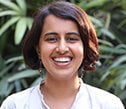


Taught by the IIHS Urban Informatics Lab, Exploring and Interpreting Quantitative Data in the Urban focusses on building basic data exploration and interpretation skills to prepare participants to use quantitative information in their work, in a meaningful way. The methods are demonstrated with example problems largely drawn from urban research and practice. Basic familiarity with Microsoft Excel (or other similar tools) will be useful to have. No prior experience with quantitative data analysis or statistics is assumed. The course is delivered online, through a mix of lectures, live demonstrations, quizzes and practice sessions in small groups.
Who this is for
- Young researchers working in academia or in the social sector
- PhD scholars and Master’s students who would like to acquire data analysis skills
- Practitioners employed in the government, NGOs or private sector, working broadly in the areas of urbanisation, sustainable development or public policy
This course will enable participants to:
- Understand the contents of some of the large public datasets available in India
- Create quantitative and visual summaries of distribution and relationships of variables using tools such as MS Excel
- Create and interpret multivariable indexes for decision making
- Appreciate how clustering of multi-dimensional data works
- Understand how regression can be used as a tool for exploratory data analysis
Herry works in the IIHS Urban Informatics Lab and applies quantitative methods, mixed methods and spatial data analysis across multiple practice and research projects. He has worked on projects related to urbanisation, economic development and transit-oriented development. In addition to the national-scale public data sets, Herry is familiar with various housing and real estate data sets available at different spatial scales. He regularly teaches courses in the Urban Fellows Programme and has also taught capacity building workshops on data visualisation. Herry has a Bachelor’s in Civil Engineering from Nirma University and a Master’s in Urban Planning from University of Southern California.

Rohit works in the IIHS Urban Informatics Lab and applies quantitative methods to study public problems relating to health, income, economy, employment, and education. He has been involved in estimating incomes at a regional scale to inform the local policy level decisions. Similar to this line of idea of creating data evidence at the local level, Rohit has been studying child health using publicly available datasets. He is actively involved in teaching in the IIHS Urban Fellows Programme and Research Methods Suite. Rohit has a Master’s in Public Policy and Governance which allows him to look at public problems from a cross-thematic lens that directly translates into teaching and research practices that he is involved in.
Shriya is a faculty member at the Indian Institute for Human Settlements (IIHS), teaching topics related to urban economic development and quantitative research methods. She anchors the IIHS Urban Informatics Lab, and her research at IIHS is primarily centred on the Indian urban economy and economic geography, with a particular focus on the role of employment in urban development and poverty reduction. She has worked extensively with datasets from the Census of India, the National Sample Survey Organisation (NSSO), and the Economic Census for various research projects. Shriya holds a Master’s in Public Affairs with a concentration in Economics from Princeton University, and a Master’s in Mathematics from Cambridge University, UK.
Sooraj works in the IIHS Urban Informatics Lab. His current focus is in applying statistical models to disaggregate previously aggregated demographic and socio-economic data from the Census and national-scale sample surveys. He applies computational and statistical methods on urban data to develop a comprehensive understanding of India’s complex urban transformation. He has been teaching multiple quantitative methods courses for the IIHS Urban Fellows Programme. Sooraj has been part of multiple quantitative methods and data visualisation training workshops for different organisations, including Atal Bihari Vajpayee Institute of Good Governance and Policy Analysis (AIGGPA) in Bhopal;GIZ (Deutsche Gesellschaft für Internationale Zusammenarbeit); and Center for Internet & Society (CIS) in Bangalore. Sooraj’s academic training is in computer science and statistics.
Programme Structure
- Combination of lectures and discussions, tool demonstrations, hands-on activities in small groups, presentations and quizzes
- Active hand-holding and individual feedback from the faculty
- Ample peer-learning opportunities
Key Differentiators
- Live examples relevant to urban research and practice in the Indian context
- Uses various official statistics and administrative data sets from India
- Combination of conceptual understanding and hands-on practice to enable immediate application of learning
Programme Details:
- Format: Online
- Dates: 23, 24, 30 and 31 August 2024
- Fees: Rs.7,500/- + 18% GST
- Maximum cohort size: 30
For more information, get in touch at upp@iihs.ac.in or on 9611911169
Session Plan
| Content | Duration |
| Session 1 This session introduces the idea of measurement and the complexities involved in measuring attributes of complex entities like people, society, and the economy. An overview of various sources of data including the Census of India, Economic Census, National Sample Surveys (NSS), National Family Health Survey (NFHS), India Human Development Survey (IHDS) and a few important administrative data sets is presented. | 3 hours |
| Session 2 This session focusses on how to identify, summarise and communicate meaningful patterns from quantitative data in the context of a research question. In a univariate setting, the idea of the distribution of a variable is explained, and quantitative and visual summaries of distributions will be discussed. This covers histograms, probability distributions, quantiles, mean and variance using multiple examples. Further discussions will be held on quantifying relationships between two variables, covering growth, correlation, scatter plots and contingency tables. Short Excel exercises are designed to help participants apply these ideas and interpret results. | 3 hours |
| Session 3 In this session, basic and commonly used methods for decision-making involving multiple variables are introduced. The construction of multi-variable indexes are demonstrated, showing how outliers can be detected, with explanations on the concept of clustering. Several examples of indexes are discussed, highlighting their uses and limitations. In the later part of the session, participants get the opportunity to work in small groups doing hands-on analysis to practise these concepts using Excel. | 3 hours |
| Session 4 In this session, the idea of clustering is demonstrated, and its usefulness discussed, when working with multi-dimensional data, with the example of understanding urban heterogeneity using Census data. Regression modelling as a tool for descriptive data analysis is briefly introduced, with examples showing a time-series trend fit and an explanatory covariate analysis. This is followed by a short demonstration of regression in Excel. | 3 hours |
Week 1
| Friday, 23 August 2024 | |
| 2:00 pm – 3:30 pm | Measurement considerations |
| 4:00 pm – 5:30 pm | Overview of Secondary Data Sets |
| Saturday, 24 August 2024 | |
| 9:30 am – 11:00 am | Identifying, summarising and communicating Patterns (Part 1) |
| 11:30 am – 1:00 pm | Identifying, summarising and communicating Patterns (Part 2) |
Week 2
| Friday, 30 August 2024 | |
| 2:00 pm – 3:30 pm | Decision-making using Multiple Variables – Indexes (Part 1) |
| 4:00 pm – 5:30 pm | Decision-making using Multiple Variables – Indexes (Part 2) |
| Saturday, 31 August 2024 | |
| 9:30 am – 11:00 am | Concepts of Cluster Analysis |
| 11:30 am – 1:00 pm | Regression Examples |
<< Back






